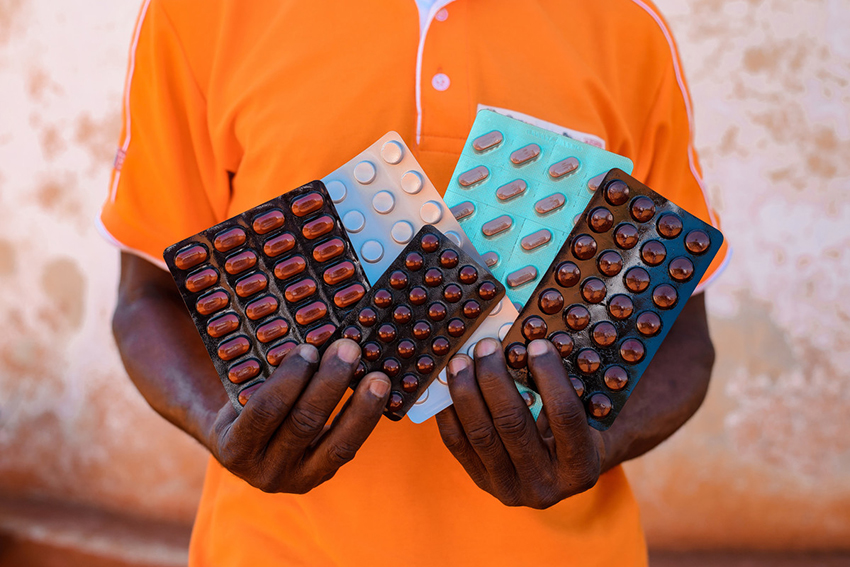
Photo Credit: Mbuto Machili/FHI 360
The global health community is concerned that tuberculosis (TB) continues to disproportionately kill people living with HIV, despite the availability of TB preventive therapy. According to the World Health Organization’s Global Tuberculosis Report 2019, deaths attributed to TB among people living with HIV account for 17 percent of all TB deaths, even though people living with HIV account for only 8.6 percent of overall TB cases.
The World Health Organization recently shared the good news that its revised TB preventive therapy guidelines now include shorter regimens to help reduce the risk of TB illness and death among all populations. TB preventive therapy is lifesaving, especially for people living with HIV, because it blocks the natural progression of TB from a latent (no symptoms) to an active form of disease.
When properly implemented, TB preventive therapy is a proven efficacious treatment of latent TB infection. For example, a 2010 study among male miners on HIV antiretroviral therapy in South Africa suggested a three-fold reduction in death among those who were put on TB preventive therapy. It is therefore unacceptable that TB should kill so many people with HIV every year. Unfortunately, barriers to accessing TB preventive therapy still exist, but there are interventions we can scale up to reduce illness and death caused by TB.
What challenges to accessing TB preventive therapy do people living with HIV face?
The management of TB among people living with HIV typically occurs in two different clinical settings linked by a referral system. First, a TB screening occurs at an HIV service delivery point, then additional TB confirmatory tests and treatment continue and conclude in a separate TB clinic. The settings can be co-located in the same health facility or separately off-site. This model of service increases waiting time, travel and cost – all of which are well-known barriers to access, adherence and completion of treatment.
Challenges also exist on the service delivery supply side. The supply chains of TB drugs and commodities are not fully integrated in the health system and are heavily dependent on donor funding, which may lead to stock-outs. Some health care providers are reluctant to initiate patients on TB preventive therapy, citing concerns with side effects and the possibility of developing drug resistance, though the benefits far outweigh the risks, especially for people living with HIV.
What interventions facilitate the scale-up of TB preventive therapy?
To date, only 1.8 million people living with HIV receive TB preventive therapy, far short of the 2022 global target of 6 million. It will take a rethink of the service design, scale-up of novel diagnostic technology and patient-friendly approaches to bring TB program performance back on track.
We urgently need to implement the following interventions.
- Adopt at scale a one-stop model of service delivery to remove the need to refer patients co-infected with HIV and TB to a TB clinic. After excluding active TB with a point-of-care test like Truenat, providers at HIV service delivery points (facility- or community-based) can initiate TB preventive therapy and monitor adherence.
- Sensitize and train providers on the published evidence of various TB preventive therapy regimens and management of side effects to allay concerns that inhibit initiation of treatment. This approach worked successfully in scaling up HIV antiretroviral therapy in sub-Saharan Africa.
- Avoid TB drug stock-outs by building synergies with better-performing supply chains, like the one for HIV antiretroviral therapy programs. A more efficient use of data can forecast demand and help manage stock.
- Invest in interventions to improve adherence by optimizing drug regimens, offering differentiated models of care, tracking patients lost to follow-up and activating community-based support groups.
The global health community has the tools to reduce to nearly zero the number of TB deaths among people living with HIV. A true integration of HIV and TB services, implementation of a one-stop model for service delivery, and strengthened supply chain and human resources can remove barriers to services and save lives.
